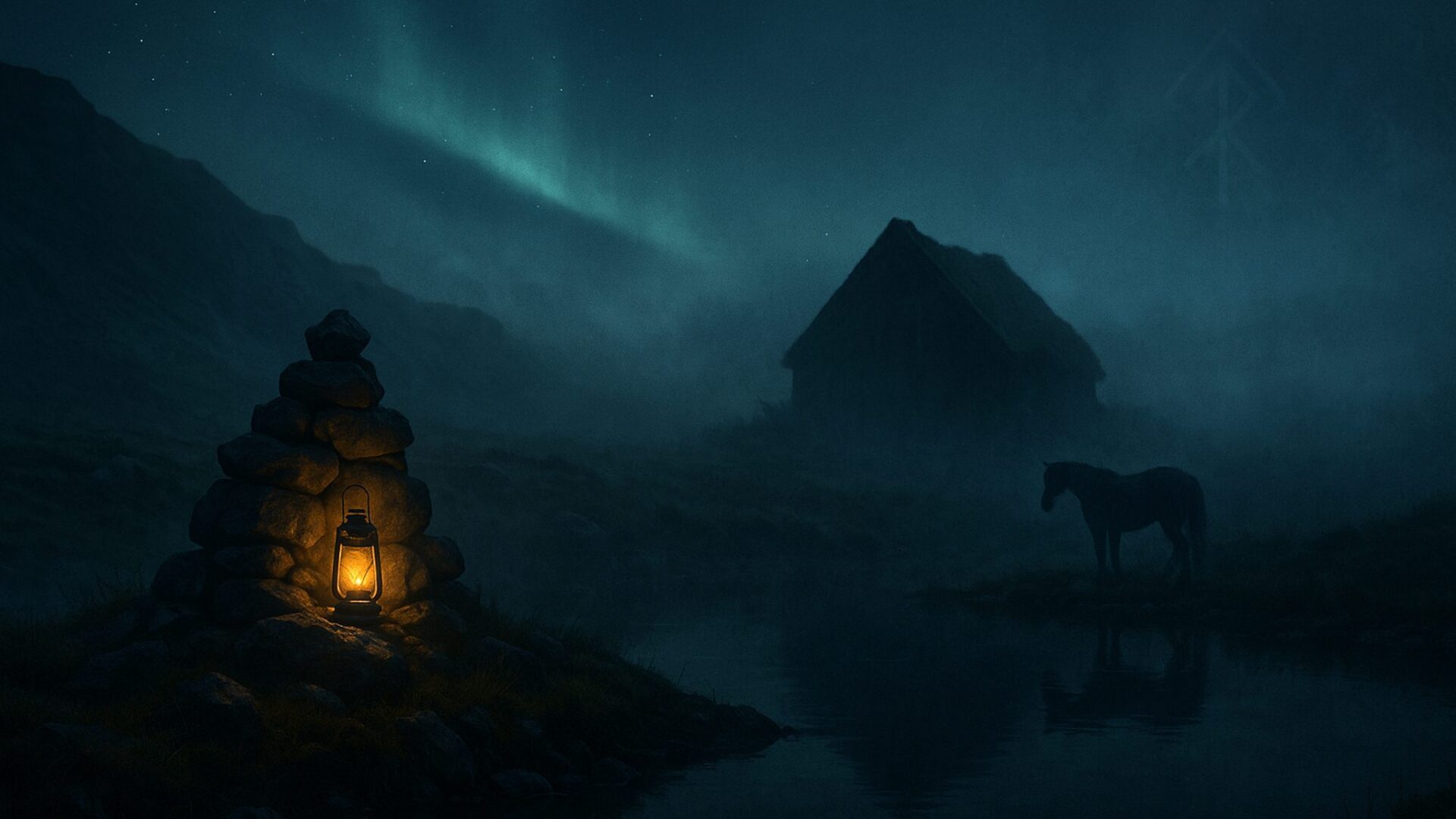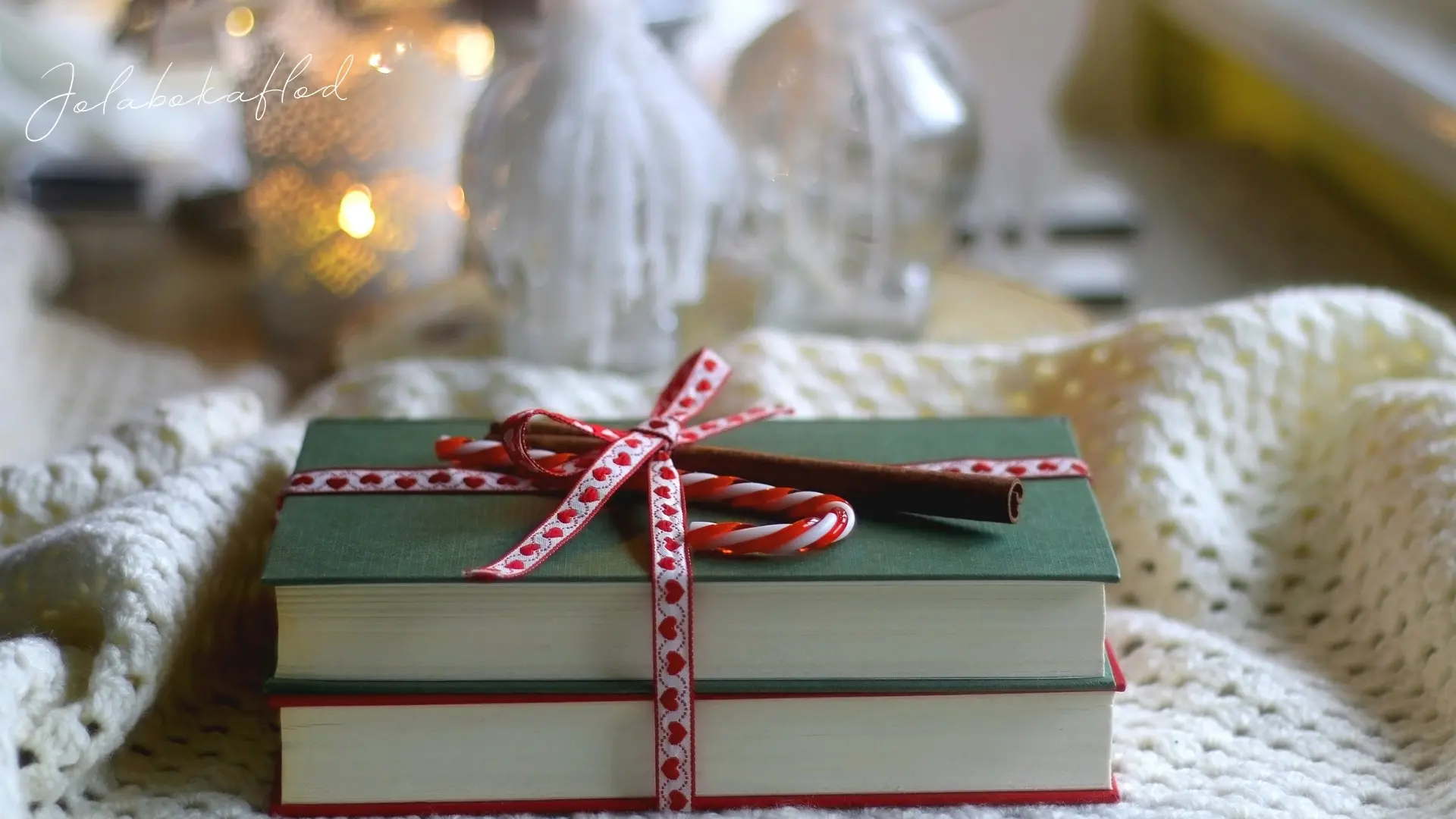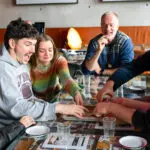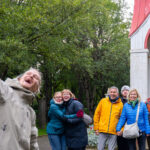When you visit Iceland, you’ll might notice that the locals have unique ways of saying hello. Just like in most languages, Icelandic greetings vary depending on the situation, whether you’re casually catching up with a friend or making a more formal introduction. Learning a few Icelandic greetings will help you blend in and make a positive impression on the locals. From the laid-back hæ to the more formal Góðan daginn, this guide will show you the Icelandic greetings you can use, no matter the occasion.
Before we start, you can have a gander at our other blogs on Icelandic:
- Learn Icelandic, the Language of the Vikings
- The Icelandic Language – What Makes it Special?
- Special Icelandic Words
- Icelandic Sayings About the Sea
- What do the Icelandic Place Names Actually Mean?
- Do I Need to Learn Icelandic for my Trip?
Keeping It Simple: Iceland’s Approach to Formality
Interestingly, Icelandic skips the strict formalities you might encounter in other European languages, such as French (vous) or German (Sie). These formal forms of address were primarily phased out around the 1970s as Iceland embraced a more egalitarian and laid-back conversation style. So, while other languages may require you to be mindful of formal and informal tones, Icelandic simplifies things—although, as you’ll see, there’s still plenty of variety regarding greetings!
Casual Greetings: Hæ and Halló
Let’s start with the easiest ones. The most common greetings you’ll hear in Iceland are hæ and halló—simple enough, right? These international words have been part of the Icelandic language since the 17th century, likely thanks to Danish influence. Hæ probably originates from Middle English, while halló is thought to have come from Middle French, from the word holá (a mix of ho! meaning “ahoy” and la meaning “there”).
These greetings are perfect for informal situations, whether you’re meeting someone for coffee or just saying hi to a friend.
Formal Greetings: Góðan daginn and Gott kvöld
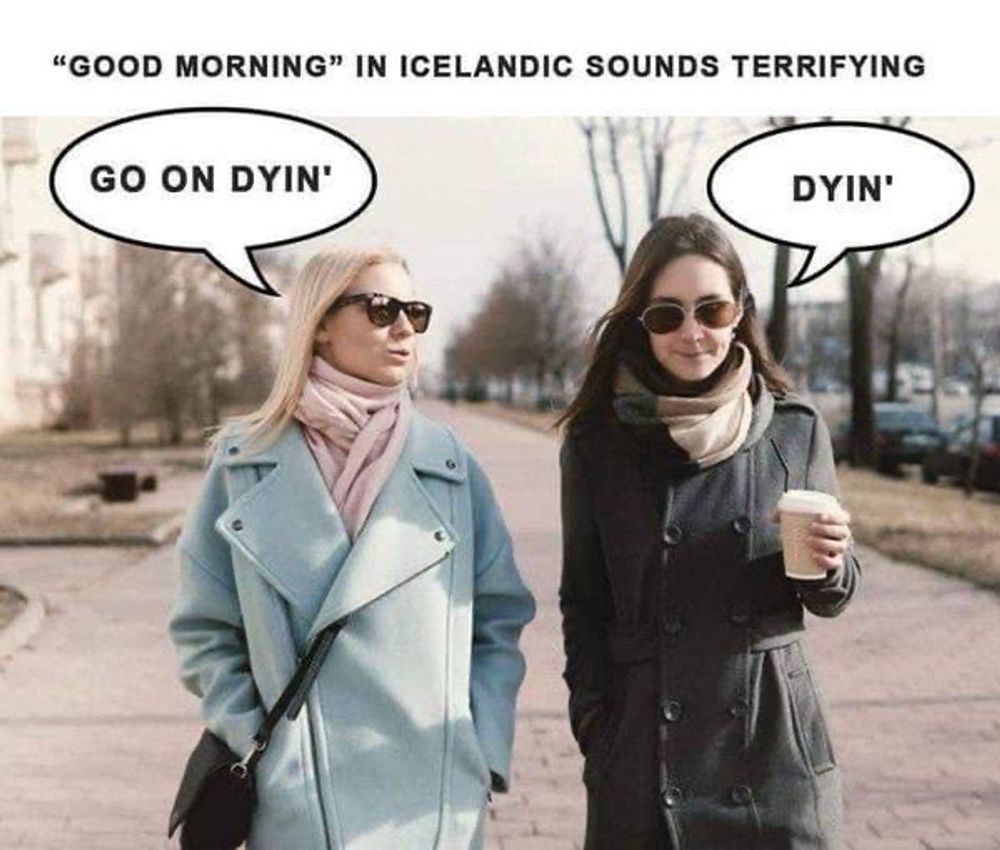
When the situation calls for something more formal—like in a shop or when you’re on the phone with someone you don’t know—the go-to phrase is Góðan dag (Good day). The typical reply is daginn(the day). While Góðan dag is grammatically correct, many people add the definite article, saying Góðan daginn. For evening greetings, you’ll useGott kvöld or Góða kvöldið (Good evening). These phrases are still used widely across Iceland and are perfect for more professional or polite interactions.
A Glimpse Into the Past: Sæll and Blessaður
Diving deeper into Icelandic tradition, you might come across the word sæll, an old word with meanings like “blessed” or “dear.” One of the most traditional greetings in Iceland is heill og sæll (health and happiness), which has been around for centuries. You might even see this in old Icelandic literature. While it’s not as common today, you’ll still hear modern variations like Komdu sæll (Hello, happy one) or the more affectionate Komdu sæll og blessaður (Hello, happy and blessed one). These phrases bring a touch of warmth and sincerity to your greeting.
The word blessaður (blessed) also pops up frequently, used both when saying hello and goodbye. For instance, you might hear someone say, Nei, komdu blessaður (Oh, come blessed one), or when parting, Vertu blessaður (Be blessed) or Vertu blessaður og sæll (Be blessed and happy).
Religious Roots in Old Greetings
Traditionally, religious phrases were often used in greetings and farewells. For example, when knocking on a door, it was once common to say Hér sé Guð (God be here), to which the person answering would respond with Guð veri með þér (God be with you) or Guð blessi þig (God bless you). These expressions are still familiar to the older generations in Iceland, though they’re not as commonly used today.
The Influence of the Military: Bæ, Bæ
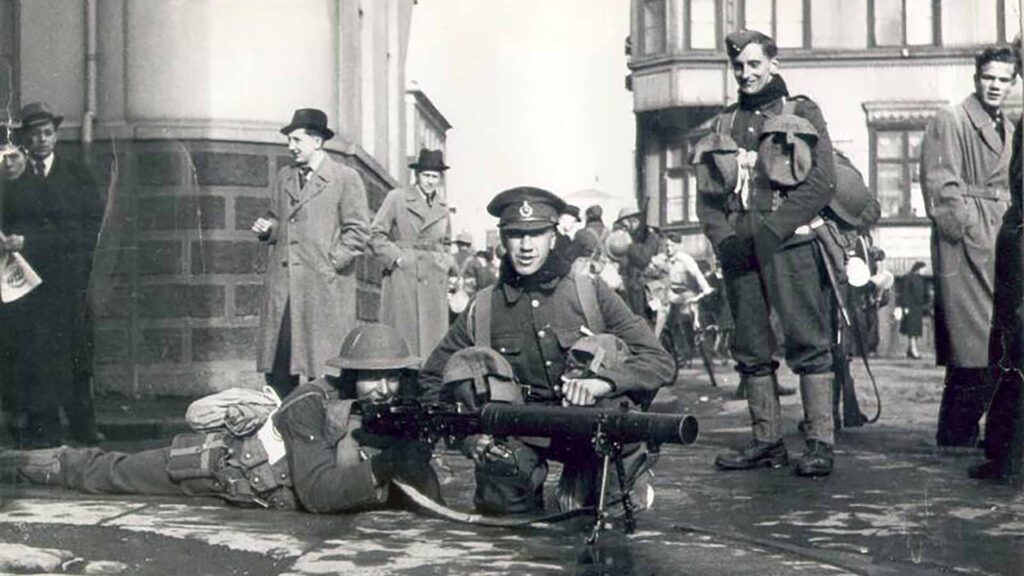
In the 20th century, especially after the arrival of foreign military forces, the casual goodbye bæ, bæ (bye-bye), became a popular way to part ways. Over time, this has been shortened to just bæ or even bæjóamong younger people. While newer greetings have emerged, these simple goodbyes are here to stay.
“How Do You Do?” in Icelandic
When asking how someone is doing in Iceland, it’s common to say Hvað segirðu? (What do you say?) or Hvað segirðu gott? (What good do you have to say?). While these phrases might sound literal, they’re essentially used to ask, “How are you?” or “What’s up?”.
Unlike in some countries where this question is just a polite formality, you’re expected to respond in Iceland. The typical, simple answer is Allt gott (Everything’s good). However, if you know the person well, they might give a more personal or detailed reply, making the exchange more genuine.
Another way to ask how someone is doing is Hvernig hefurðu það? (How are you feeling?). This question invites a more thoughtful or nuanced response, as it asks more directly about the person’s well-being.
How to use Icelandic greetings
Whether you’re addressing a single person or a group, there’s a greeting for every situation:
- Sæll – Used to greet a man (literally means “happy”).
- Sæl – Used to greet a woman or a mixed group.
- Sælir – Used to greet multiple men.
- Sælar – Used to greet various women.
- Sælt – This word is in the neuter gender, for those who prefer not to use he or she pronouns.
Blessed Greetings
These phrases add a touch of formality or warmth to your hello:
- (Komdu) blessaður – (Come,) be blessed (singular, masculine).
- (Komdu) blessuð – (Come,) be blessed (singular feminine, plural mixed gender).
- (Komdu) blessað – (Come,) be blessed (singular, neuter)
Health and Happiness
For a more traditional and heartfelt greeting:
- Komdu heill og sæll – Come, be healthy and happy (singular, masculine).
- Komið heil og sæl – Come, be healthy and happy (plural or feminine).
- Komdu heilt og sælt – Come, be health and happy (singular, neutar).
Combining Happy and Blessed
These greetings are slightly more formal and affectionate:
- Sæll og blessaður – Happy and blessed (singular, masculine).
- Sæl og blessuð – Happy and blessed (feminine or plural).
- Sælt og blessað – Happy and blessed (singular, neuter)
For informal or everyday situations:
- Sælinú – Literally “hello now” (informal).
- Halló – Hello (mainly used when answering the phone).
- Hæ hæ or just hæ – The simple and universal “hi!”
As you can see, Icelandic greetings offer a blend of simplicity and tradition, reflecting the country’s modern mindset and deep-rooted history. Whether exploring the streets of Reykjavik or trekking through the countryside, knowing how to greet people in Icelandic can open the door to a more authentic connection with the locals.
So next time you meet someone in Iceland, don’t be shy—give a cheerful hæ or a warm Góðan daginn, and you’ll be well on your way to blending in with the locals.
To learn more about Iceland during your trip to the country, check out our Walk With a Viking, Reykjavik Food Lovers Tour, Reykjavik Beer and Booze Tour and Reykjavik Folklore Tour.

